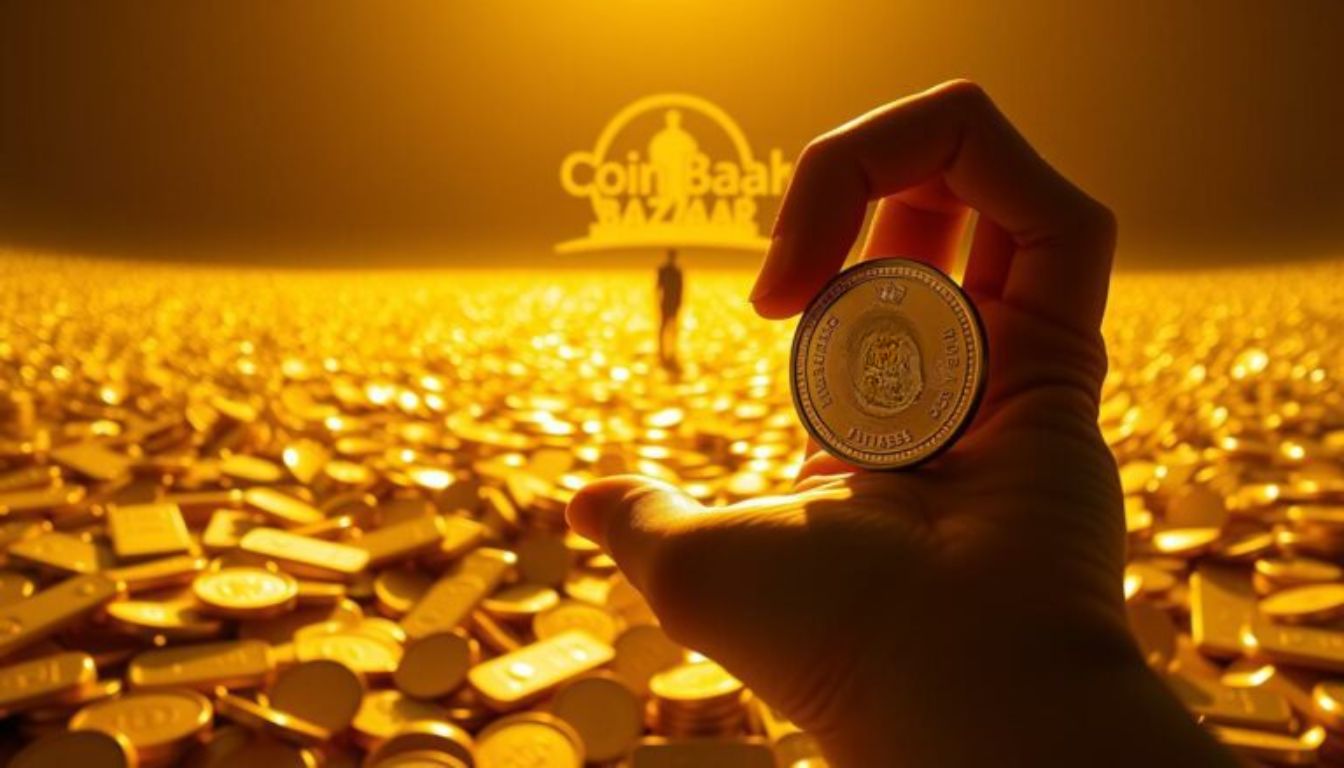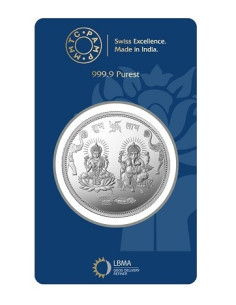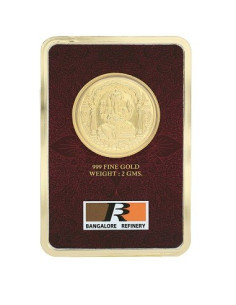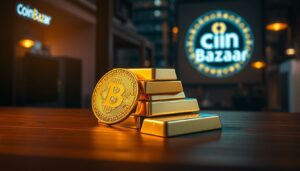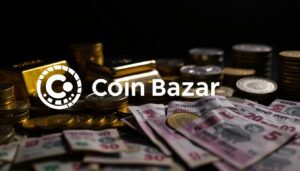Exclusive Deals & Trending Items


Muthoot Pappachan Swarnavarsham Gold Hallmarked Rose Coin of 1 gms in 22 KT 916 Purity Fineness
Shop NowThe world’s financial scene is changing fast. Countries are moving away from using the US dollar. This is called de-dollarization. They want to not rely so much on the US dollar.
Central banks are now spreading out their money. They’re looking at gold investment as a smart move.
Gold is becoming a safe choice for central banks. They buy it to protect against inflation. It’s helping them manage their money better.
Key Takeaways
- De-dollarization is driving central banks to diversify their reserves.
- Gold is emerging as a neutral reserve asset.
- Central banks are increasing gold purchases to hedge against inflation.
- The trend is transforming reserve management strategies.
- Gold investment is becoming increasingly important.
The Shifting Global Financial Landscape
In recent years, the world’s financial scene has seen a big change. This change is away from the US dollar. It’s called de-dollarization. It’s happening because countries want a more balanced world economy and don’t want to rely on just one currency.
Understanding De-Dollarization Trends
De-dollarization means less US dollar in global trade, finance, and reserves. This trend is growing as countries look to use different currencies. This change involves many players, like central banks, governments, and banks.
Christine Lagarde, the European Central Bank’s President, said, “The international monetary system is not a ‘one-size-fits-all’ system.” This shows we need more variety and flexibility in global finance.
Key Countries Leading the Shift
Some countries are leading the way in de-dollarization. These include:
- China, which wants more yuan in international deals.
- Russia, which is spreading out its reserves beyond the US dollar.
- India, which is looking at other currencies for trade agreements.
These countries are pushing for a more balanced currency system. This change will affect global finance a lot.
Impact on International Trade and Finance
The move away from the dollar will change international trade and finance a lot. New chances for using different currencies will come up. Gold will likely be key in this new world, as a neutral asset and a way to protect against currency swings.


This change will make the international money system more complex and possibly volatile. So, it’s very important for investors, policymakers, and businesses to understand what’s happening.
Historical Perspective: Gold’s Enduring Value
Gold has always been a safe choice, even in tough economic times. You might ask why gold stays valuable. It’s because of its long history and role in times of trouble.
Gold Through Economic Crises
Gold has been a safe-haven asset in tough times, keeping its value when others don’t. For example, in 2008, gold prices went up as people looked for safe places to put their money. This pattern has happened many times in history, like during the Great Depression.


The End of the Gold Standard
The gold standard linked currencies to gold’s value in the past. But, it had its limits, especially in hard times. The collapse of the gold standard in the early 20th century changed how money is managed. It brought more flexibility but also new problems.
Lessons from Past Currency Transitions
Looking back, we learn a lot about money changes and gold’s role. These lessons help us understand today’s money world and gold’s place in it. For instance, history shows the importance of diversifying and having a strong value during economic ups and downs.
By studying gold’s past and the lessons from economic crises and money changes, we get a clearer picture of its lasting value today.
Gold as a Neutral Asset: Beyond Political and Economic Boundaries
As the world’s economy changes, gold’s role as a stable asset grows. You might know that when global politics are uncertain, people look for assets not linked to any country’s economy or politics.
Gold is perfect for this because it doesn’t need trust in anyone, has no risk of default, and can’t be created or frozen. Its neutrality makes it a great choice for investors wanting to avoid political and economic issues.
Transcending Geopolitical Tensions
Geopolitical issues can shake up financial markets, causing ups and downs in currencies and stocks. Gold’s neutrality is especially valuable here, as it’s not affected by any country’s economic or political state.
Gold offers a safe place to invest during these times. Its value is set by global demand and supply, not by local economic conditions.
Gold’s Universal Acceptance
Gold is seen as a neutral asset because it’s widely accepted. It’s valued everywhere, making it a solid choice for international deals and settlements.
This acceptance comes from gold’s long history as a valuable store and medium of exchange. You can see it in action when central banks and investors worldwide hold gold as a reserve.
| Country | Gold Reserves (Tonnes) | % of Total Reserves |
|---|---|---|
| United States | 8,133.5 | 73.6% |
| Germany | 3,363.4 | 71.3% |
| Italy | 2,451.8 | 69.4% |
Case Studies of Gold Diplomacy
Gold has been key in international diplomacy, helping countries with tense relations. Gold diplomacy has helped settle trade balances and foster economic cooperation.
Looking at history, gold has helped stabilize international relations and boost economic ties. It shows how gold can be a neutral asset in complex geopolitical situations.
Central Banks and Gold Reserves: A Global Perspective
Central banks are buying gold at a record pace. They want to cut down on traditional currencies. Gold helps them manage risks and fight inflation.
Recent Trends in Central Bank Gold Purchases
Central banks have been buying gold non-stop. Many countries have boosted their gold reserves in recent years. Last year, they bought a record amount of gold.
Key statistics on central bank gold purchases:
| Year | Gold Purchased (Tonnes) | Top Purchasing Countries |
|---|---|---|
| 2022 | 450 | China, India, Russia |
| 2021 | 380 | China, Turkey, India |
| 2020 | 270 | Russia, China, Turkey |
Strategic Motivations Behind Reserve Diversification
Central banks buy gold for many reasons. It protects against inflation and currency drops. Gold also helps during global tensions.
India’s Position in the Global Gold Reserve Rankings
India is big in the gold market. The Reserve Bank of India (RBI) has been growing India’s gold reserves.
RBI’s Gold Policy Evolution
The RBI’s gold policy has changed over time. It aims to improve India’s gold reserves. This includes buying, storing, and using gold for financial deals.
Comparison with Other Emerging Economies
India’s gold reserve strategy is careful and smart. Countries like China and Russia also buy gold. But India’s pace and scale are different.
Gold is key for central banks worldwide. They buy gold to make their finances more stable. This move helps them not rely too much on traditional currencies.
The BRICS Nations and Gold-Backed Alternatives
Gold-backed alternatives are becoming popular among BRICS countries. This shows a possible change in how money works around the world. As these nations grow closer economically, gold is playing a bigger part in their money plans.
Potential for a New Reserve Currency
The BRICS group, made up of Brazil, Russia, India, China, and South Africa, is looking into a new currency backed by gold. This could shake up the US dollar’s top spot in global trade and finance. A gold-backed currency might be a safer choice for value and exchange, attracting countries wanting to lessen their dollar reliance.
Gold’s Role in BRICS Financial Cooperation
Gold is key in BRICS financial teamwork. By adding gold to their money systems, these countries are making their finances stronger and less vulnerable to currency swings. This move is part of a bigger plan to bring BRICS closer together economically.
Implications for Indian Investors
For Indian investors, the BRICS focus on gold has both ups and downs. A stable currency could boost trade and investment with BRICS nations. Yet, it might also mean Indian investors need to adjust their plans to fit a new money scene.
Trade Opportunities with BRICS Partners
As the BRICS group grows, Indian businesses and investors might see new chances for trade and investment. Understanding gold-backed alternatives can help you move through this changing world and grab new chances.
Gold vs. Digital Alternatives: Cryptocurrencies and CBDCs
The world of finance is changing fast. Now, people are talking more about gold versus digital options like cryptocurrencies and Central Bank Digital Currencies (CBDCs). You might be curious about how these options compare in terms of stability, control, and growth potential.
Comparing Stability and Sovereignty
Gold has always been seen as stable and in control. But, cryptocurrencies are known for their volatility, changing value quickly. CBDCs, being digital versions of a country’s money, offer stability backed by the government. Yet, they face risks from digital technology.
Technological Disruption in the Monetary System
Digital currencies are changing the money world. Cryptocurrencies operate independently of central banks, offering a new choice. CBDCs are a digital step forward for traditional money, making transactions smoother. But, how will gold fit into this new world?
Hybrid Approaches: Gold-Backed Digital Assets
A new idea is gold-backed digital assets. They mix gold’s stability with digital currency’s ease. These assets are backed by real gold, giving you digital gold ownership. This mix might offer the best of both worlds.
India’s Digital Rupee and Gold Connection
India is looking into a Digital Rupee, a CBDC that might link to gold. This could make digital currency more appealing by adding gold’s value. It’s an interesting idea for how gold could be part of digital money.
In summary, the debate between gold and digital options is complex. Each has its own benefits and drawbacks. Knowing these details is key to making smart investment choices.
The Indian Perspective: Cultural and Economic Significance of Gold
Gold is very important in Indian culture. It affects how people manage their money and make investment choices. Gold is not just a valuable metal in India. It stands for wealth, safety, and cultural tradition.
Gold in Indian Household Finances
In Indian homes, gold is key to financial safety. It’s seen as a way to protect against rising costs. Gold investments help spread out risks in other investments.
Gold is also crucial in marriage and festival ceremonies. Giving gold jewelry is a big part of these events. This tradition boosts gold’s demand and cultural value.
Government Policies and Gold Monetization
The Indian government has launched plans to use gold better. The Gold Monetization Scheme and Sovereign Gold Bonds are examples. These aim to cut down on gold imports and encourage financial use of gold.
By participating in these schemes, you can earn interest on your gold. Or, you can invest in gold-backed securities.
Evolving Investment Patterns Among Indian Investors
Indian investors are now exploring different gold investment options. Digital gold and gold ETFs are becoming popular. They offer gold benefits without the need for physical storage.
Exploring these modern options might interest you.
Regional Variations in Gold Consumption
Gold use varies across India. Southern India, for example, consumes more gold per person than other areas. Knowing these differences can help in making better investment choices.
Festival and Wedding Season Impact
The demand for gold goes up during festivals and weddings. This surge affects gold jewelry prices. Being aware of these trends can help in making timely investment moves.
Understanding gold investment in India requires looking at cultural, economic, and regulatory factors. This knowledge helps in making choices that fit your financial goals.
Practical Strategies for Investing in Gold as a Hedge
Thinking about adding gold to your investment mix? Investing in gold can be a smart way to protect your money from economic ups and downs. Gold has always been a solid value, helping to balance out the risks of other investments.
Physical Gold: Coins, Bars, and Jewelry
Physical gold is a great choice for those who want something real to hold onto. You can buy gold coins, bars, or even jewelry.
Ensuring Authenticity and Purity
It’s key to check if the gold you buy is real and pure. Look for stamps on coins and bars that show their weight and purity. Buying from trusted dealers is also a good idea.
Storage and Insurance Considerations
Storing gold safely is important. You might need a safe or a bank box, and think about getting insurance to guard against loss or theft.
Paper Gold: ETFs, Sovereign Gold Bonds, and Gold Funds
Paper gold is another way to get into gold without having to store it. You can choose from Gold ETFs, Sovereign Gold Bonds, or gold mutual funds.
Comparing Costs and Liquidity
When picking paper gold, look at the costs. Compare fees and expense ratios, and how easy it is to sell them.
Gold Mining Stocks and Derivatives
Investing in gold mining stocks or derivatives can give you more gold exposure. These investments might offer higher returns but also come with risks.
Learning about the different ways to invest in gold helps you make smart choices to grow and protect your wealth.
Portfolio Allocation: Finding Your Ideal Balance with Gold
As global financial shifts happen, finding the right gold balance in your portfolio is key. It’s about knowing your financial goals, risk level, and how long you plan to invest.
Determining Your Optimal Gold Exposure
Think about your investment strategy and gold’s role in it. Gold can protect against inflation and currency loss. A common rule is to put 5-10% of your portfolio in gold, but it depends on you.
Rebalancing Strategies During Currency Volatility
When currency values change, rebalancing your portfolio is crucial. You might sell assets that grew too much and buy gold to meet your goal. Regular rebalancing helps manage risk and keeps your portfolio on track.
Age-Based Gold Investment Approaches
Your age and how long you plan to invest affect your gold strategy. Different ages have different investment needs.
Gold for Young Investors
Young investors see gold as a small but important part of growing their wealth. It helps protect against investment downturns.
Pre-Retirement Gold Strategies
As retirement nears, you might increase gold in your portfolio. This reduces risk and safeguards your savings from market ups and downs. Gold can be a stable value during retirement.
Understanding your gold needs and using smart rebalancing strategies can help you face global financial changes with confidence.
Tax Implications and Regulatory Considerations for Gold Investors
As a gold investor, you know that understanding taxes is key to making the most of your investments. The tax rules for gold in India are complex. They involve many regulations and rules you must follow.
Understanding Indian Tax Laws on Gold
Indian tax laws treat gold investments in different ways. For example, physical gold is taxed when sold. The tax rate depends on how long you’ve owned the gold.
If you’ve had it for over three years, it’s considered long-term. Then, the gains are taxed at 20% after adjusting for inflation. This adjustment, called indexation benefits, can lower your tax bill.
Import Regulations and Their Impact
Import rules greatly affect the gold market in India. The government charges duties on gold imports. This can change the price of gold.
“The import duty on gold has been a contentious issue, with changes in duty rates directly influencing gold prices in the domestic market.”
It’s important for investors to know these rules. This helps them predict price changes.
Compliance Requirements for Different Gold Investments
Gold investment products have different rules to follow. For instance, gold ETFs and sovereign gold bonds have different tax rules than physical gold. Knowing these differences helps you follow the rules and save on taxes.
GST and Gold Transactions
The GST has made tax rules for gold clearer. But, GST rates on gold can still affect your investment costs. A 3% GST is charged on gold, including jewelry making costs. Investors should consider this when planning their investments.
Gold Price Analysis: Factors Influencing Your Investment Value
The price of gold reflects the state of the economy and global tensions. When you think about investing in gold, knowing what affects its price is key.
Geopolitical Tensions and Gold Prices
Geopolitical tensions greatly impact gold prices. When there’s political unrest, people turn to gold as a safe investment. This can cause gold prices to rise.
For example, the Ukraine-Russia conflict led to a gold price increase. Investors sought out gold as a secure option.
“In times of uncertainty, gold has historically been a reliable store of value.”
Currency Devaluation Effects
Currency devaluation also plays a big role in gold prices. When a currency weakens, gold becomes more expensive in that currency. This is because gold prices are usually set in US dollars. A weaker dollar makes gold cheaper for investors with other currencies.
Currency Devaluation and Gold Price:
| Currency | Devaluation Effect | Impact on Gold Price |
|---|---|---|
| US Dollar | Weakens | Increases |
| Indian Rupee | Depreciates against USD | Rises in INR terms |
Supply-Demand Dynamics in the Gold Market
The gold market’s price is influenced by supply and demand. More demand, especially from central banks and investors, can raise prices. On the other hand, more supply can lower prices.
In India, gold prices follow seasonal patterns, especially during festivals like Diwali and Akshaya Tritiya. Knowing these patterns can help you invest wisely. Gold prices usually go up during these times because of higher jewelry demand.
By looking at geopolitical tensions, currency devaluation, supply-demand, and seasonal patterns, you can better understand gold prices. This knowledge helps you make smarter investment choices.
Future Scenarios: Preparing for a Post-Dollar World
A post-dollar world is becoming a reality. Investors and economies are getting ready. The idea of a new global monetary system is changing how we think about money.
Potential Monetary System Restructuring
The US dollar’s influence is strong, but changes are coming. A more diverse currency system could reduce the dollar’s power.
Experts say changes will happen slowly. This could mean:
- More use of other currencies in global deals
- New financial tools
- Central banks working together more
Regional Currency Blocs and Gold’s Position
Regional currency blocs might form in a post-dollar world. This could make international trade more stable. Gold could be key in this new setup.
“In a world where regional currency blocs become more prevalent, gold could serve as a neutral asset, facilitating trade and investment among countries with different currencies.”
Gold is widely accepted and safe. It’s a good choice in a world with many currencies.
Preparing Your Portfolio for Various Outcomes
It’s important to get your portfolio ready for different scenarios. This might include:
| Scenario | Potential Impact | Investment Strategy |
|---|---|---|
| Dollar Remains Dominant | Limited change in global currency dynamics | Maintain dollar-denominated assets |
| Regional Currency Blocs Emerge | Increased currency diversification | Invest in a mix of currencies and gold |
| Global Currency Reset | Significant shift in global economic power | Diversify into assets like gold and other safe-havens |
Signals to Watch for Major Shifts
Look out for signs like:
- Changes in central bank reserve allocations
- Shifts in global trade patterns
- Advancements in digital currencies and their adoption
Stay informed and diversify to handle the unknowns of a post-dollar world.
Conclusion: Navigating Uncertainty with the Stability of Gold
Gold is becoming key in the ever-changing global finance scene. With more people looking for safe places to keep their money, gold stands out. It’s valued everywhere and keeps its worth, making it a top choice for investors.
Gold is a rock in shaky economic times. It’s good for both personal investors and big banks. Adding gold to your investments can help you handle the ups and downs of the market.
In short, gold’s solid reputation and safe status make it appealing for risk reduction. When thinking about where to put your money, remember gold. It’s a smart addition to a varied portfolio, helping you stay steady in uncertain times.






